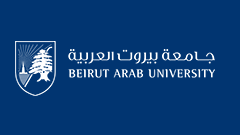Abstract
Language is a living organism that gets born, develops and multiplies. It is either meant to survive and regenerate whenever needed and necessitated, or to fall into inertia and stagnancy, and then to perish and evanesce. Undoubtedly, this is all directly linked to the ability of its speakers, and to their constant quest to vividly express their culture, thoughts, behaviors, beliefs and other life matters, fortifying, thus, their existence and upholding their presence in this world. The Arabic language has been and continues to be the language that refuses to age, and declines to stand still, unless this pleases its people. The Arabic language, with its unique features and attributes at the lexical, morphological, grammatical and semantic levels, has demonstrated its power to cope with any cultural change, ideological alteration, social transformation, political direction and media influence in any society where it accurately subsists on the tongues of its children, and the efforts of its scientists. Since the Arabic language has been subject to renewal and change, and since this ancient language has the attributes and characteristics that make it capable of development and creativity in order to permanently meet the demands of every age and culture of all time, and in an age of competition among languages in evolution and creativity, which comes in response to the wheel of rapid development on different levels, and considering that all, is the Arabic language capable of keeping abreast of this linguistic creativity and lingual evolution so as to keep up with the aspects of this era – which is characterized by speed, brevity and practicality – while committed to the criteria of linguistic legacy, a legacy that dominates linguistic use in each age based on provisions and rules derived from linguistic.
Keywords
الظواهر اللغوية، النحت، النحت الدلالي، الاختصار، التراكيب اللغوية، المعيارية
Recommended Citation
Ajine, Khalil
(2019)
"التراكيب اللغويّة بين معياريّة التراث والاستعمال المعاصر,"
BAU Journal - Society, Culture and Human Behavior: Vol. 1:
Iss.
1, Article 20.
DOI: https://doi.org/10.54729/2789-8296.1019

